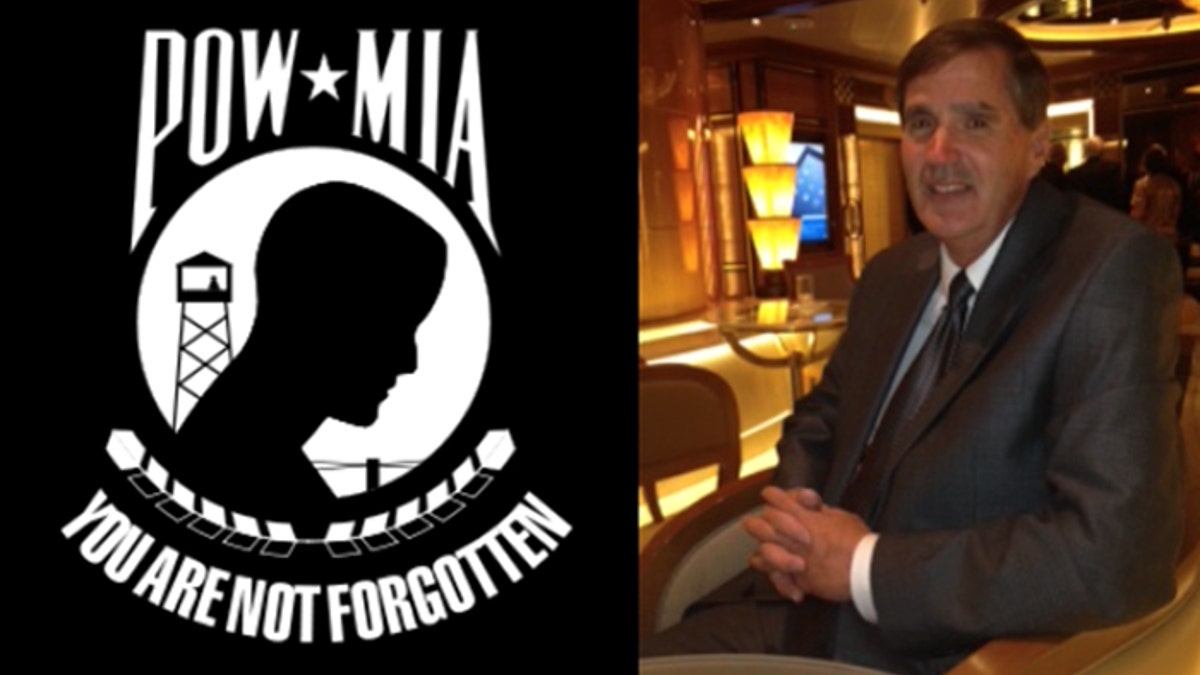
Jeffrey Heisley's profile has long been a symbol for America's prisoners of war.
Most Americans don't know who Jeffrey Heisley is, but chances are good they've seen his profile and contemplated the painful sacrifices of countless Vietnam veterans and their families.
It is the silhouetted face of a young Heisley that adorns the iconic POW/MIA flag that flies above the White House with Old Glory on the Fourth of July and just below the star-spangled banner on flagpoles throughout the nation. The black and white banner, which drew attention to U.S. combat forces taken prisoner of war or deemed missing in action, was designed by Heisley's father in 1970, and the then-22-year-old's turn as a model came about quite by accident.
“My Dad was a commercial illustrator and did a lot of work in the New York/New Jersey area,” Heisley, who grew up in Glen Ridge, N.J., said.
FULL COVERAGE: PROUD AMERICANS
One of Newt Heisley's freelance clients was Annin Flags, America’s oldest flag maker, which was chosen by POW advocate The National League of POW/MIA Families to produce the flag.
Heisley was in the United States Marine Corps' officer candidate program, and dealing with a bout of hepatitis that would eventually force him to drop out. Between the rigors of training and his illness, the young Heisley had inadvertently taken on the gaunt look of a POW.
[pullquote]
“I had all my hair cut off and lost quite a bit of weight because of the hepatitis. I look back at pictures of myself now and I'm amazed at how bad I really did look,” said Heisley.
His father called him into his studio one night in a moment of thoughtful inspiration.
“He said, 'Whoa, whoa, whoa, Jeff, let me see your profile,'" Heisley, now 66 and a respiratory therapist in Wasilla, Alaska, recalled. "He spun me around a couple times, looked at my face and my profile. "He didn’t say a whole lot about what he wanted it for.”
Years later, the profile of a young Heisley still appears above the words, "You are not forgotten” on the flag, which was ubiquitous in the 1970s, and saw a resurgence in the 1990s.
According to Ann Mills-Griffiths, executive director of The National League of POW/MIA Families, the flag is receiving international attention.
“Many of our flags fly 24/7 now, every state capitol has them, many schools have them, and all the military bases post them at their stations,” said Griffiths.
The Defense Authorization Act of 1998 requires that the League’s POW/MIA flag fly six days each year, including Independence Day -- when it even flies at the White House. Other than “Old Glory,” the POW/MIA flag is the only one to fly over the White House since its Recognition Day in 1982, according to the League of Families website.
Scot Guenter, professor of American Studies at San Jose State University, believes there’s deep meaning behind the flag.
“You’re looking at the man behind the symbol. But what happens in patriotic culture is that the symbols become larger than life as they’re invested with shared meaning and values for people,” Guenter explained.
Newt Heisley died in 2009 at 88. Although neither he nor his son were ever prisoners of war or missing in action, Newt Heisley served in the U.S. military as an Army Air Force pilot in World War II.
Jeffrey Heisley said it's humbling to know his family took part in creating a powerful symbol of American patriotism. It's something he holds with great respect and honor.
“It’s very important for the families of those missing in action and for former prisoners to have a tangible symbol of what their families have gone through,” said Heisley. “And it’s very important for those of us not involved in the situation not to lose sight of their plight, and never to lose sight of those left behind on the field of action.”

